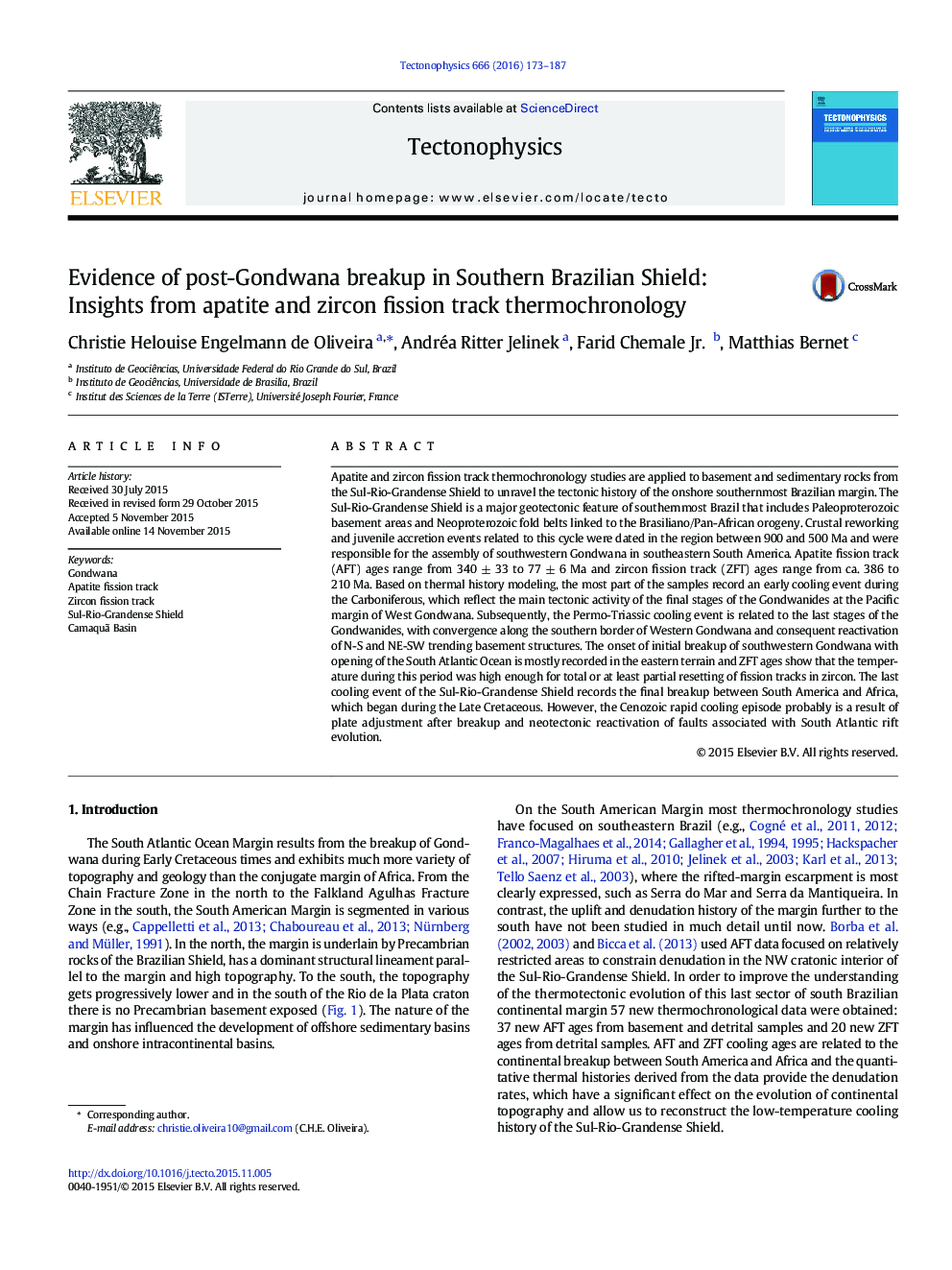| کد مقاله | کد نشریه | سال انتشار | مقاله انگلیسی | نسخه تمام متن |
|---|---|---|---|---|
| 4691442 | 1636729 | 2016 | 15 صفحه PDF | دانلود رایگان |
• Southern Brazilian Shield record an early cooling event during the Ordovician.
• Precambrian structures were reactivated during breakup of southwestern Gondwana.
• The Cenozoic cooling episode is associated with South Atlantic rift evolution.
Apatite and zircon fission track thermochronology studies are applied to basement and sedimentary rocks from the Sul-Rio-Grandense Shield to unravel the tectonic history of the onshore southernmost Brazilian margin. The Sul-Rio-Grandense Shield is a major geotectonic feature of southernmost Brazil that includes Paleoproterozoic basement areas and Neoproterozoic fold belts linked to the Brasiliano/Pan-African orogeny. Crustal reworking and juvenile accretion events related to this cycle were dated in the region between 900 and 500 Ma and were responsible for the assembly of southwestern Gondwana in southeastern South America. Apatite fission track (AFT) ages range from 340 ± 33 to 77 ± 6 Ma and zircon fission track (ZFT) ages range from ca. 386 to 210 Ma. Based on thermal history modeling, the most part of the samples record an early cooling event during the Carboniferous, which reflect the main tectonic activity of the final stages of the Gondwanides at the Pacific margin of West Gondwana. Subsequently, the Permo-Triassic cooling event is related to the last stages of the Gondwanides, with convergence along the southern border of Western Gondwana and consequent reactivation of N-S and NE-SW trending basement structures. The onset of initial breakup of southwestern Gondwana with opening of the South Atlantic Ocean is mostly recorded in the eastern terrain and ZFT ages show that the temperature during this period was high enough for total or at least partial resetting of fission tracks in zircon. The last cooling event of the Sul-Rio-Grandense Shield records the final breakup between South America and Africa, which began during the Late Cretaceous. However, the Cenozoic rapid cooling episode probably is a result of plate adjustment after breakup and neotectonic reactivation of faults associated with South Atlantic rift evolution.
Figure optionsDownload as PowerPoint slide
Journal: Tectonophysics - Volume 666, 15 January 2016, Pages 173–187
